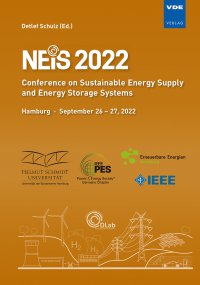Electric vehicle and vehicle to grid technology influence on renewable energy supported grid – a case study on Germany
Konferenz: NEIS 2022 - Conference on Sustainable Energy Supply and Energy Storage Systems
26.09.2022 - 27.09.2022 in Hamburg, Germany
Tagungsband: NEIS 2022
Seiten: 6Sprache: EnglischTyp: PDF
Autoren:
Sagaria, Shemin; Bostroem, Tobias (The Arctic Centre for Sustainable Energy, UiT – The Arctic University of Norway, Tromsø, Norway)
Inhalt:
The 2030 energy goal of Germany is to generate 80% of the electricity from renewable energy sources (RES). The intermittency of the RES still holds as a hurdle toward such goals. Our study focuses on electric vehicles (EVs) and vehicle-to-grid technology (V2G) to indicate how the intermittency of RES can potentially be balanced by V2G using EV as an energy storage system. A flexible simulation model is developed for the study in the MATLAB/Simulink platform. From the study, the simulation results showed that without EVs and V2G, 3 to 4 times of PV and corresponding wind energy (1.5 to 2 times) installation is required to have a mix of 80% electricity from RES. In addition, 107 TWh from pumped hydro energy storage (PHES) is required to balance the need. Using EVs and V2G balancing, the need to develop more energy storage installations is significantly reduced. The PHES energy flow reduces from 107 to 37 TWh when implementing 15 million EVs and V2G connectivity. However, the total electricity demand goes up when electrifying the transport sector. Subsequently, there is a need to further increase PV by 27 – 40% and wind by 17 – 23%. Finally, the simulation result shows that a balance between renewable energy sources is required to avoid excess energy generation and energy wastage.


